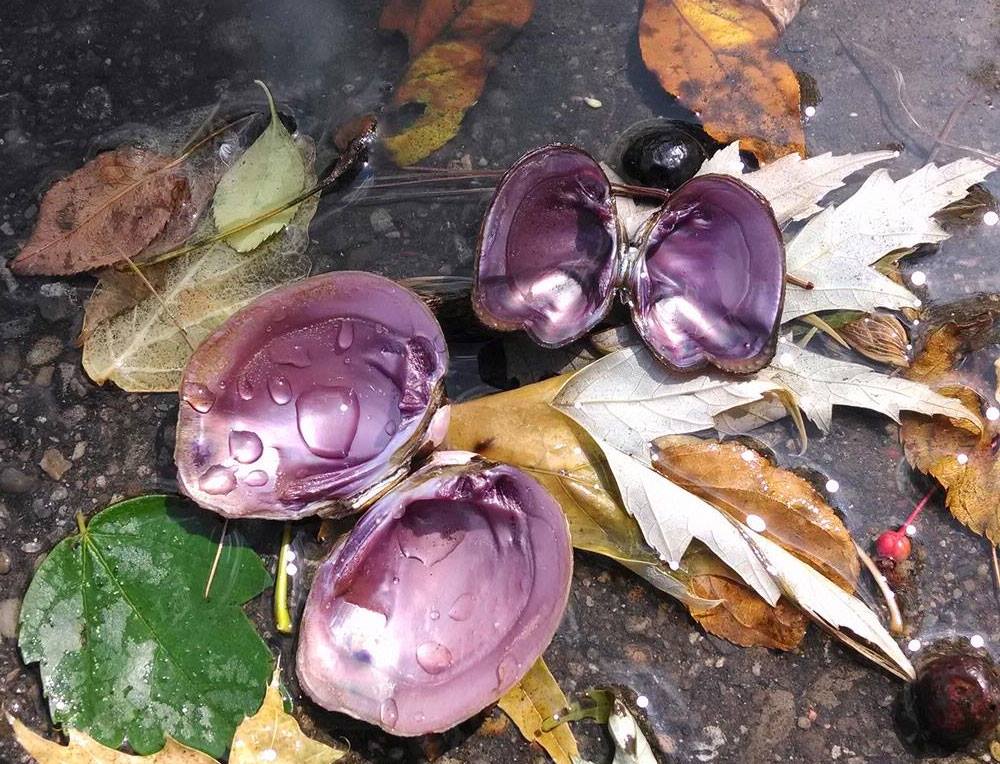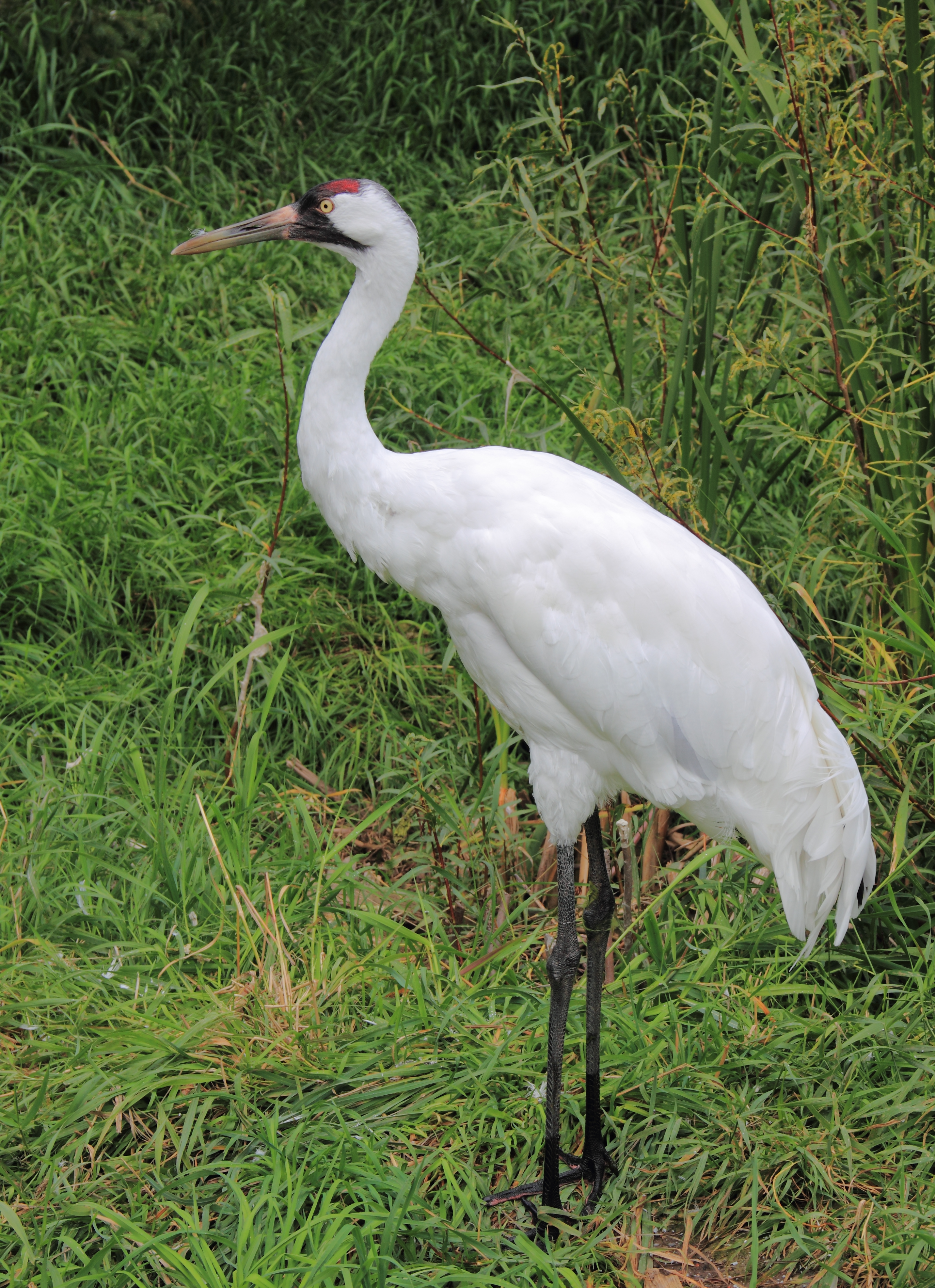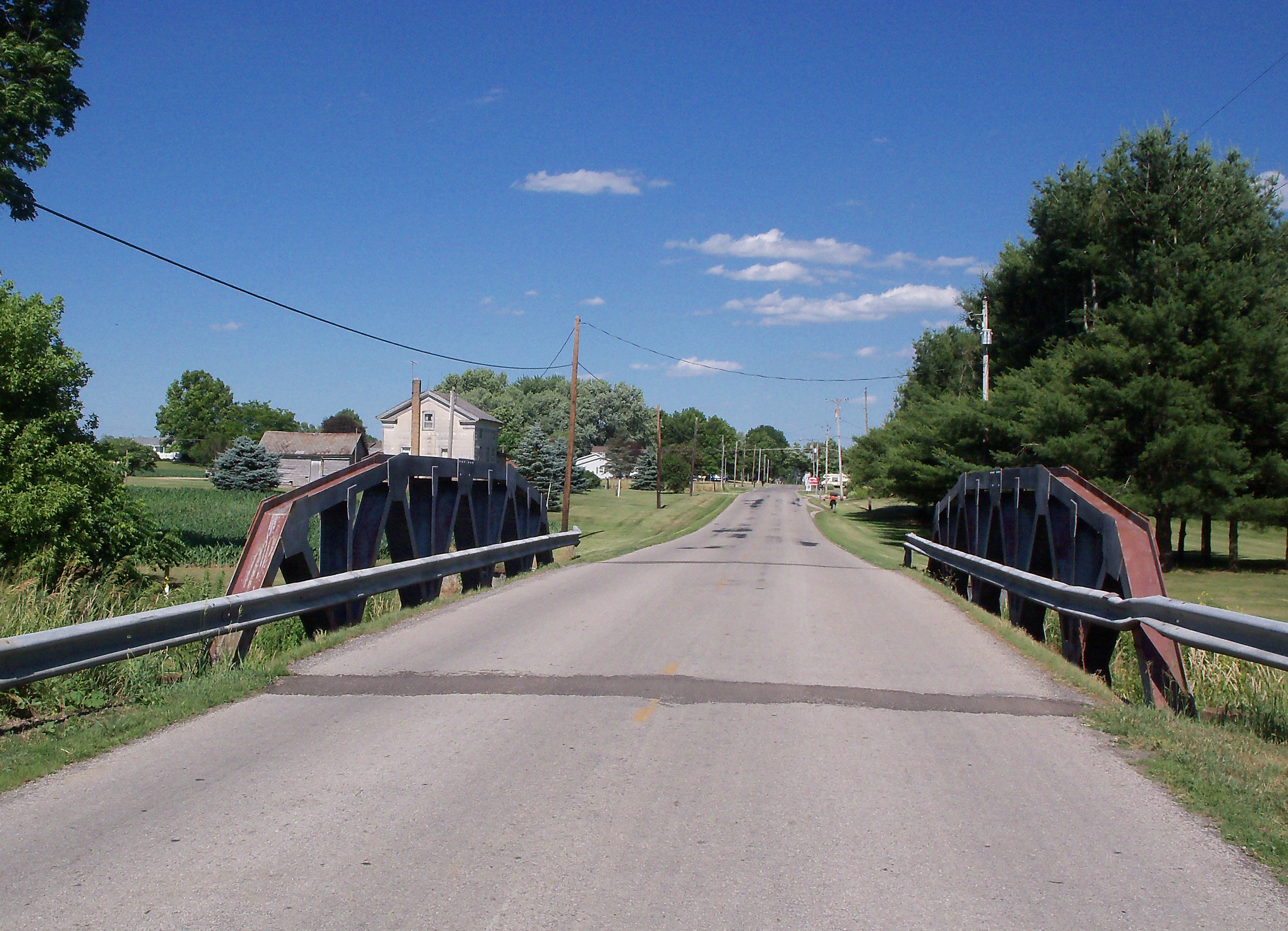|
Epioblasma Obliquata
''Epioblasma obliquata'', commonly called the catspaw, is a species of freshwater mussel. It is native to eastern North America, where it is classified as endangered under the Endangered Species Act. Natural history and conservation This species was historically widespread in the Ohio River and Great Lakes drainage basins. Like many other North American freshwater mussels, it relies on a habitat of shallow, gravelly riffle zones in larger rivers. This oxygen-rich habitat has largely been destroyed over the past 200 years by dam construction and dredging, which caused a massive population decline. Both subspecies, the white catspaw and the purple catspaw, are critically endangered. By the time ''E. obliquata obliquata'', the purple catspaw, was listed in 1990 under the Endangered Species Act, no surviving breeding populations were known. This changed in 1994 when a few young individuals were found in Killbuck Creek, Ohio, indicating a small breeding population. An attempt to col ... [...More Info...] [...Related Items...] OR: [Wikipedia] [Google] [Baidu] |
Species
In biology, a species is the basic unit of Taxonomy (biology), classification and a taxonomic rank of an organism, as well as a unit of biodiversity. A species is often defined as the largest group of organisms in which any two individuals of the appropriate sexes or mating types can reproduction, produce Fertility, fertile offspring, typically by sexual reproduction. Other ways of defining species include their karyotype, DNA sequence, morphology (biology), morphology, behaviour or ecological niche. In addition, paleontologists use the concept of the chronospecies since fossil reproduction cannot be examined. The most recent rigorous estimate for the total number of species of eukaryotes is between 8 and 8.7 million. However, only about 14% of these had been described by 2011. All species (except viruses) are given a binomial nomenclature, two-part name, a "binomial". The first part of a binomial is the genus to which the species belongs. The second part is called the specifi ... [...More Info...] [...Related Items...] OR: [Wikipedia] [Google] [Baidu] |
Freshwater Mussel
Freshwater bivalves are one kind of freshwater mollusc, along with freshwater snails. They are bivalves that live in fresh water as opposed to salt water, which is the main habitat type for bivalves. The majority of species of bivalve molluscs live in the sea, but in addition, a number of different families live in fresh water (and in some cases, also in brackish water). These families belong to two different evolutionary lineages (freshwater mussels and freshwater clams), and the two groups are not closely related. Freshwater bivalves have a simple morphology that varies among taxa, and are distributed around most regions of the world. Species in the two groups vary greatly in size. Some pea clams ('' Pisidium'' species) have an adult size of only 3 mm. In contrast, one of the largest species of freshwater bivalves is the swan mussel, in the family Unionidae; it can grow to a length of 20 cm, and usually lives in lakes or slow rivers. Freshwater pearl mussels are ec ... [...More Info...] [...Related Items...] OR: [Wikipedia] [Google] [Baidu] |
Endangered Species Act
The Endangered Species Act of 1973 (ESA or "The Act"; 16 U.S.C. § 1531 et seq.) is the primary law in the United States for protecting imperiled species. Designed to protect critically imperiled species from extinction as a "consequence of economic growth and development untempered by adequate concern and conservation", the ESA was signed into law by President Richard Nixon on December 28, 1973. The Supreme Court of the United States described it as "the most comprehensive legislation for the preservation of endangered species enacted by any nation"."Tennessee Valley Authority v. Hill" 437 U.S. 153 (1978) Retrieved 24 November 2015. The purposes of the ESA are two-fold: to prevent extinction and to recover species to the point where the law's protections are not needed. It theref ... [...More Info...] [...Related Items...] OR: [Wikipedia] [Google] [Baidu] |
Ohio River
The Ohio River is a long river in the United States. It is located at the boundary of the Midwestern and Southern United States, flowing southwesterly from western Pennsylvania to its river mouth, mouth on the Mississippi River at the southern tip of Illinois. It is the third largest river by discharge volume in the United States and the largest tributary by volume of the north-south flowing Mississippi River that divides the eastern from western United States. It is also the 6th oldest river on the North American continent. The river flows through or along the border of six U.S. state, states, and its drainage basin includes parts of 14 states. Through its largest tributary, the Tennessee River, the basin includes several states of the southeastern U.S. It is the source of drinking water for five million people. The lower Ohio River just below Louisville is obstructed by rapids known as the Falls of the Ohio where the elevation falls in restricting larger commercial navigatio ... [...More Info...] [...Related Items...] OR: [Wikipedia] [Google] [Baidu] |
Great Lakes
The Great Lakes, also called the Great Lakes of North America, are a series of large interconnected freshwater lakes in the mid-east region of North America that connect to the Atlantic Ocean via the Saint Lawrence River. There are five lakes, which are Superior, Michigan, Huron, Erie, and Ontario and are in general on or near the Canada–United States border. Hydrologically, lakes Michigan and Huron are a single body joined at the Straits of Mackinac. The Great Lakes Waterway enables modern travel and shipping by water among the lakes. The Great Lakes are the largest group of freshwater lakes on Earth by total area and are second-largest by total volume, containing 21% of the world's surface fresh water by volume. The total surface is , and the total volume (measured at the low water datum) is , slightly less than the volume of Lake Baikal (, 22–23% of the world's surface fresh water). Because of their sea-like characteristics, such as rolling waves, sustained w ... [...More Info...] [...Related Items...] OR: [Wikipedia] [Google] [Baidu] |
Killbuck Creek
Killbuck Creek is a tributary of the Walhonding River, 81.7 mi (131.5 km) long,Ohio Department of Natural Resources''A Guide to Ohio Streams.'' in north-central in the . Via the Walhonding, Muskingum and Rivers, it is part of the |
Ohio
Ohio () is a U.S. state, state in the Midwestern United States, Midwestern region of the United States. Of the List of states and territories of the United States, fifty U.S. states, it is the List of U.S. states and territories by area, 34th-largest by area, and with a population of nearly 11.8 million, is the List of U.S. states and territories by population, seventh-most populous and List of U.S. states and territories by population density, tenth-most densely populated. The state's capital and List of cities in Ohio, largest city is Columbus, Ohio, Columbus, with the Columbus metropolitan area, Ohio, Columbus metro area, Cincinnati metropolitan area, Greater Cincinnati, and Greater Cleveland being the List of metropolitan statistical areas, largest metropolitan areas. Ohio is bordered by Lake Erie to the north, Pennsylvania to the east, West Virginia to the southeast, Kentucky to the southwest, Indiana to the west, and Michigan to the northwest. Ohio is historically known as ... [...More Info...] [...Related Items...] OR: [Wikipedia] [Google] [Baidu] |
Epioblasma Obliquata Purple Catspaw
''Epioblasma'' is a genus of freshwater mussels, aquatic bivalve mollusks in the family Unionidae, the river mussels. Most of the species in this genus have been lost in modern times, and the entire genus is threatened with the possibility of extinction. Reproduction All Unionidae are known to use the gills, fins, or skin of a host fish for nutrients during the larval glochidia stage. It was discovered in 2004 that female ''Epioblasma'' in the subgenus ''Torulosa'' transfer their parasitic larvae to the host fish by snapping onto the head of the fish and pumping the larvae into the host fish's gills. While using bait to lure host fish towards the larvae is common in the family Unionidae, this was the first time that "fish snapping" behavior had been observed. Examination of other species within the genus ''Epioblasma'' may further reveal unusual reproductive mechanisms. Taxonomy of the genus ''Epioblasma'' Note: Taxa with a " †" symbol are extinct due to human activity *Subg ... [...More Info...] [...Related Items...] OR: [Wikipedia] [Google] [Baidu] |
Indiana
Indiana () is a U.S. state in the Midwestern United States. It is the 38th-largest by area and the 17th-most populous of the 50 States. Its capital and largest city is Indianapolis. Indiana was admitted to the United States as the 19th state on December 11, 1816. It is bordered by Lake Michigan to the northwest, Michigan to the north, Ohio to the east, the Ohio River and Kentucky to the south and southeast, and the Wabash River and Illinois to the west. Various Indigenous peoples of the Americas, indigenous peoples inhabited what would become Indiana for thousands of years, some of whom the U.S. government expelled between 1800 and 1836. Indiana received its name because the state was largely possessed by native tribes even after it was granted statehood. Since then, settlement patterns in Indiana have reflected regional cultural segmentation present in the Eastern United States; the state's northernmost tier was settled primarily by people from New England and New York ... [...More Info...] [...Related Items...] OR: [Wikipedia] [Google] [Baidu] |
White Catspaw
''Epioblasma obliquata'', commonly called the catspaw, is a species of freshwater mussel. It is native to eastern North America, where it is classified as endangered under the Endangered Species Act. Natural history and conservation This species was historically widespread in the Ohio River and Great Lakes drainage basins. Like many other North American freshwater mussels, it relies on a habitat of shallow, gravelly riffle zones in larger rivers. This oxygen-rich habitat has largely been destroyed over the past 200 years by dam construction and dredging, which caused a massive population decline. Both subspecies, the white catspaw and the purple catspaw, are critically endangered. By the time ''E. obliquata obliquata'', the purple catspaw, was listed in 1990 under the Endangered Species Act, no surviving breeding populations were known. This changed in 1994 when a few young individuals were found in Killbuck Creek, Ohio, indicating a small breeding population. An attempt to coll ... [...More Info...] [...Related Items...] OR: [Wikipedia] [Google] [Baidu] |
Epioblasma
''Epioblasma'' is a genus of freshwater mussels, aquatic bivalve mollusks in the family Unionidae, the river mussels. Most of the species in this genus have been lost in modern times, and the entire genus is threatened with the possibility of extinction. Reproduction All Unionidae are known to use the gills, fins, or skin of a host fish for nutrients during the larval glochidia stage. It was discovered in 2004 that female ''Epioblasma'' in the subgenus ''Torulosa'' transfer their parasitic larvae to the host fish by snapping onto the head of the fish and pumping the larvae into the host fish's gills. While using bait to lure host fish towards the larvae is common in the family Unionidae, this was the first time that "fish snapping" behavior had been observed. Examination of other species within the genus ''Epioblasma'' may further reveal unusual reproductive mechanisms. Taxonomy of the genus ''Epioblasma'' Note: Taxa with a "†" symbol are extinct due to human activity *Subgenu ... [...More Info...] [...Related Items...] OR: [Wikipedia] [Google] [Baidu] |
ESA Endangered Species
, owners = , headquarters = Paris, Île-de-France, France , coordinates = , spaceport = Guiana Space Centre , seal = File:ESA emblem seal.png , seal_size = 130px , image = Views in the Main Control Room (12052189474).jpg , size = , caption = , acronym = , established = , employees = 2,200 , administrator = Director General Josef Aschbacher , budget = €7.2 billion (2022) , language = English and French (working languages) , website = , logo = European Space Agency logo.svg , logo_caption = Logo , image_caption = European Space Operations Centre (ESOC) Main Control Room The European Space Agency (ESA; french: Agence spatiale européenne , it, Agenzia Spaziale Europea, es, Agencia Espacial Europea ASE; german: Europäische Weltraumorganisation) is an intergovernmental organisation of 22 member states dedicated to the exploration of space. Established in 1975 and headquartered ... [...More Info...] [...Related Items...] OR: [Wikipedia] [Google] [Baidu] |










